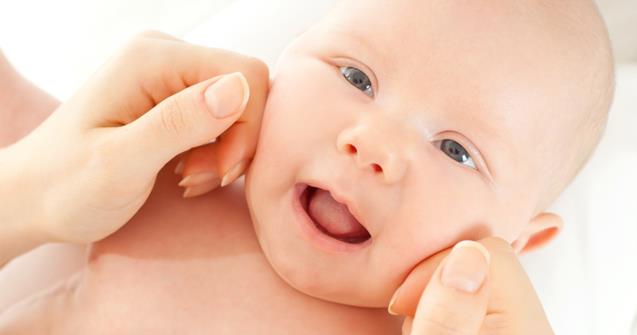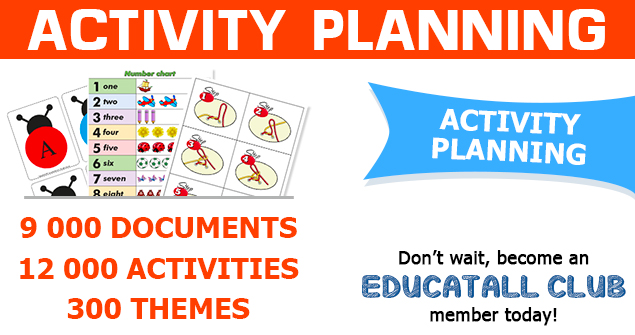
My face
Activities for toddlers and babies
AREA SETUP
Take a close-up picture of each child's face. If possible, print the pictures in a very large format and laminate them. Display them on the walls of your daycare, at children's eye level. Have fun naming the different parts of each child's face with your group, pointing to each one (on the pictures) as you name them.
ROUTINES AND TRANSITIONS
Washing my face is fun
Encourage children's autonomy at lunch time. Purchase attractive facecloths. After lunch, wet the facecloths with lukewarm water and invite babies and toddlers to wash their mouth and face. Use a facecloth to wash your own face. They will follow your example. Just for laughs, place the facecloth on your head and use it for a simple peek-a-boo game too. As children wash their face, name various parts (eyes, nose, mouth, cheek, etc.).
SENSORY ACTIVITIES (smell)
Take babies and toddlers to the kitchen and have fun smelling different spices: cinnamon, cloves, lavender, vanilla, thyme, rosemary, etc. Use this activity to point to and name each child's nose, explaining how this body part makes it possible for them to smell.
SENSORY ACTIVITIES (look)
Cut several squares of colourful clear paper. Using adhesive tape, create a frame around each square to make them stronger. Have fun looking through the colourful paper with your group to give children the opportunity to explore new colors. Use this activity to point to children's eyes and name the body part that makes it possible for children to see.
ARTS & CRAFTS
Body part collage
Cut several faces, eyes, noses, and mouths out of old magazines. Have fun sticking them on adhesive paper or large pieces of construction paper. If you prefer, children may also arrange them on paper plates. Name the different parts of a face with the children in your group.
Mr. Potato Head
Set the eyes, noses, and mouths from your Mr. Potato Head game on a table. Help children form a ball with modeling dough to represent a head. Let them press the pieces in their ball of dough.
MORAL AND SOCIAL ACTIVITIES
Eyeglasses
Collect several old eyeglasses (without the lenses) and sunglasses. It doesn't matter if they are too big for the children in your group. Encourage toddlers to try them on. Use this activity to establish a connection between eyeglasses and their eyes. Take pictures of the children in your group as they are trying on the eyeglasses and sunglasses (supervision required).
Peek-a-boo games
Here is an activity for older toddlers. Place a large sticker on your nose and hide behind a blanket. Remove the blanket as you say, "Peek-a-boo!" Direct children's attention to your nose. Repeat the activity. Every time, place the sticker on a different part of your face. This exercise is ideal for working on object permanence, recognizing a difference, and fostering an emotional connection.
COGNITIVE ACTIVITIES
A colourful nose
In front of a mirror, draw a colourful dot on the tip of each child's nose. Name the color. Encourage children to use a moistened lukewarm facecloth to make the dot on their nose disappear. Select a different color and repeat the activity.
Colourful cheeks
As in the previous activity, draw a dot on each of your cheeks (different colors). Have fun naming the colors and establishing a relationship with children's cheeks. Repeat the activity, this time drawing dots on the cheeks of the children in your group.
PHYSICAL ACTIVITY AND MOTOR SKILLS
Ball on my nose
Give each child a small ball and ask them to place it on their nose, on their forehead, on the top of their head, etc. You can explore other body parts too (stomach, feet, etc.) to provide children with the opportunity to move as much as possible.
LANGUAGE ACTIVITIES
Mini posters
In the Educatall club, you will find a document called Mini posters-The body. Print and laminate the document. Use it to point to and name different parts of the face.
Words and sounds
Set a variety of items that can be used to project your voice on the floor: a microphone, empty plastic containers, empty toilet paper rolls, metal cans with no sharp edges, etc. Encourage babies and toddlers to use the items to pronounce words and produce sounds. Point to their mouth and name the part of the face that is involved in the production of words and sounds.
Chantal Millette
Early childhood educator

 Home
Home Theme activities
Theme activities
 Babies and toddlers
Babies and toddlers
 Arts and crafts
Arts and crafts
 Science
Science
 Creative recipes
Creative recipes
 Tips and tricks
Tips and tricks
 Special needs
Special needs
 Extra activities
Extra activities
 Educ-TV
Educ-TV
 Newsletter
Newsletter  Online store
Online store Educatall club
Educatall club

